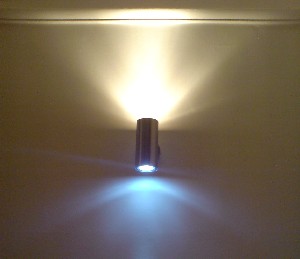
With Diwali just around the corner, it's time to hit the stores to pick up everything that you might have been saving up for.And if you have been eyeing that brightly lit, size zero display at the local electronics store but are confused by all that advertising blitzkrieg about LED and 3D TVs, allow us to enlighten you.The big-wigs in the display game like Samsung, Sony and LG have managed to grab your attention with their larger-than-life ads for their new ‘LED' television displays, but here are a couple of things you should know about LEDs, before you shell out the big bucks.
Some ‘unlearning' first! LED TVs, as you might have been led to believe, are not truly LED (Light Emitting Diode) displays but are, in reality, LCD ones. The difference between a regular LCD and an LED TV lies in the ‘backlighting'. What's that, you ask? Here's a low-down.
Remember the digital watch you had as a kid or the scientific calculator that you dad gifted you? The display on those were LCD displays too! The only difference being, that those weren't backlit, unlike TV sets that adorn our living rooms today.LCD displays are based on liquid crystals, which are particles that can arrange and re-arrange themselves in response to an electric current. Each crystal can act like a shutter either allowing light to pass through or blocking the incoming light.One LCD panel constitutes millions of such liquid crystals arranged in a grid to let a backlight through and create images. As a source of backlighting, regular LCD TVs use fluorescent bulbs, technically known as CCFLs (Cold cathode fluorescent lamps). These had succeeded CRT television sets that were bulky and created pictures that were far from stunning.The LED TVs that are being portrayed as larger-than-life displays in ads now, are an improvement on the existing LCD TV technology and are not truly a brand new technology altogether. Hence, LED TVs are actually just another type of LCD displays.These are called LED TVs because, instead of the CCFL bulbs, a panel of Light Emitting Diodes or LEDs are the source for the backlight for these LCD TVs.
Why the replacement?
CCFLs are significantly more cost-effective for bigger displays like a TV set but when it comes to the overall picture quality, contrast ratio, colour gamut and power efficiency, LEDs can deliver better. This has prompted all major manufacturers to turn to the new lighting kid on the block.
Types of LEDs
There are two-types of LED TVs based on how they provide the backlight for the LCD display.Backlit / Full array LED – Backlit or full-array LED TVs are made up of LEDs grouped in ‘blocks' and placed behind the LCD panel in the display. These blocks of LEDs can be switched on or off independently of each other. This ability, popularly known as local dimming is exclusive to backlit LEDs and results in a much improved contrast ratio than a traditional LCD or even an edge-lit one.Edge-lit LED – Like the name suggests, the LEDs on these sets are arranged only along the edge of the LCD panel but a ‘diffusion' panel allows for the light to be distributed evenly throughout your TV set.
Owing to the fact that this kind of display requires the LEDs to be placed only at the sides of the unit, it paves the way for manufacturers to build a set so slim that it would give size-zero models an inferiority complex.Edge-lit LEDs also score when it comes to power efficiency. Compared to the conventional LCD TV and even a backlit LED, an edge-lit consumes much lesser power.


No comments:
Post a Comment